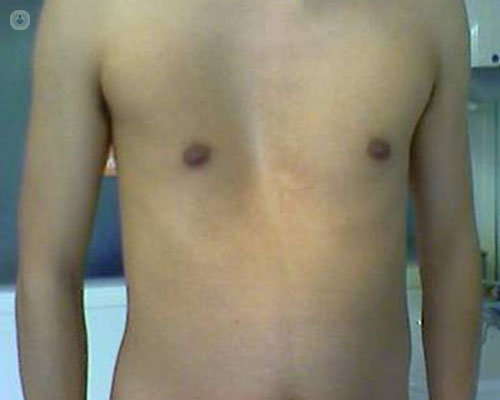


What is pectus excavatum?
This is a congenital deformity of the rib cage in which the breastbone is sunken into the chest. If the condition is not treated, it can cause compression (pressure) of the lungs and heart.

What are the symptoms?
The main symptoms of pectus excavatum include:
- Difficulty breathing
- Chest pain
- Decreased resistance to exercise
- Wheezing or coughing
- Fatigue
What causes pectus excavatum?
Researchers believe that pectus excavatum is due to an irregular growth of connective tissue (cartilage) that connects the ribs to the breastbone. This irregular growth causes the breastbone to move inwards.
Can it be prevented?
Unfortunately, pectus excavatum cannot be prevented, but the good news is that it can be treated.
What does treatment involve?
If pectus excavatum causes problems in the heart or lungs, doctors may recommend surgery. The aim is to improve breathing, function, and heart position. There are several surgical procedures for this purpose:
- The Nuss procedure: This is a non-invasive technique. A small incision is made to insert a camera that allows the surgeon to see inside the chest. Then, through two other incisions on each side of the chest, a curved steel bar is inserted under the breastbone to reverse the depression. It is not visible from the outside and remains there for two to three years before eventually being removed.
- The Ravitch procedure: This is performed through an incision made in the middle of the chest to remove the cartilage. Stainless steel bars are then put in place to support the sternum and the corresponding ribs are connected. This allows the sternum to be lifted. These will later be removed in another operation.
It is also possible to correct pectus excavatum without surgery, with vacuum bell therapy. However, this is very uncomfortable and requires perseverance and years of application to correct the problem.